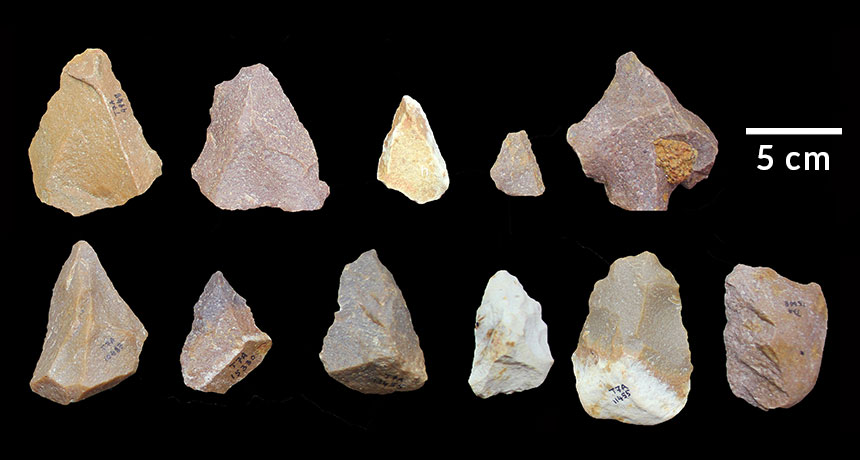Sharp stones found in India signal surprisingly early toolmaking advances
Homo sapiens didn’t introduce the technology after all, excavated artifacts suggest

ROCK ON Excavations at a site in India yielded these sharpened stones, among others. The find indicates that hominid populations there made big changes in toolmaking starting around 385,000 years ago, before Homo sapiens left Africa.
Sharma Centre for Heritage Education, India







